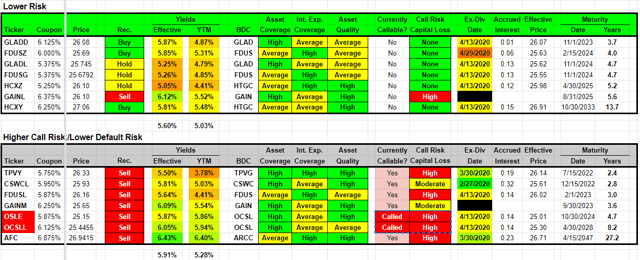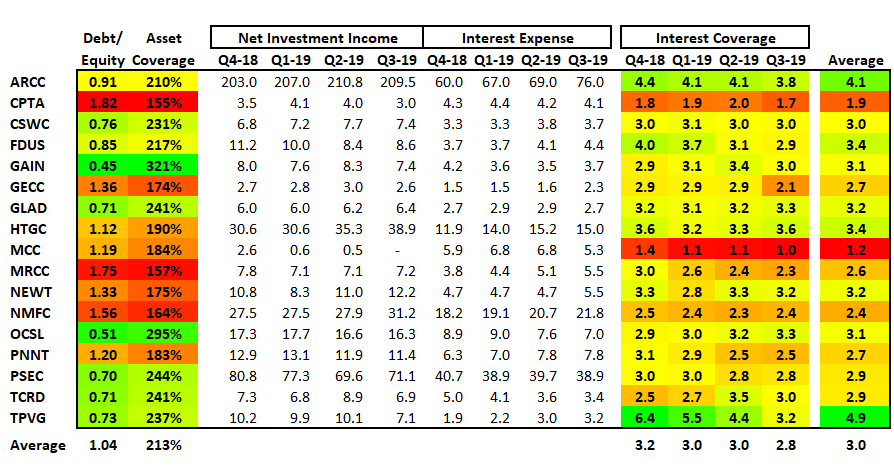The following is from the FDUS Deep Dive that was previously provided to subscribers of Premium BDC Reports along with revised target prices, dividend coverage and risk profile rankings, potential credit issues, earnings/dividend projections, quality of management, fee agreements, and my personal positions for all business development companies (“BDCs”).
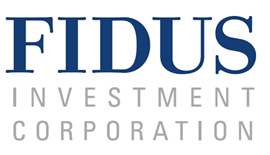
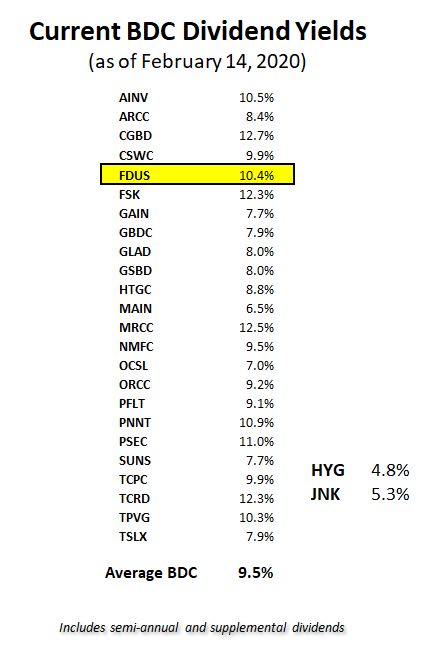

Baby Bonds “FDUSG”, “FDUSZ” and “FDUSL”:
On October 16, 2019, FDUS announced the closing of its $55 million of its 5.375% notes due 2024 under the trading symbol “FDUSG” “within 30 days of October 16, 2019” that has been added to the BDC Google Sheets along with “FDUSL” and “FDUSZ” already included.
There is a good chance that FDUSL will be redeemed this year as it carries a rate of 5.875% and became redeemable as of February 1, 2020.
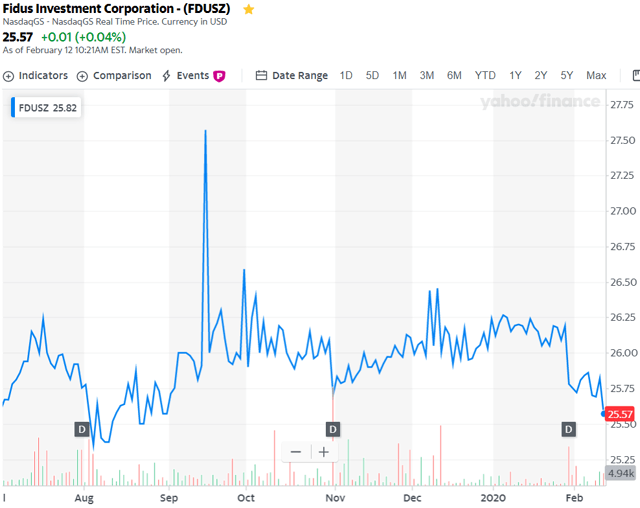
—————–
One of the metrics used to analyze the safety of a debt position (including Baby Bonds) is its “Interest Expense Coverage” ratio which measures the ability to pay current borrowing expenses. From Investopdia:
“The interest coverage ratio is used to determine how easily a company can pay their interest expenses on outstanding debt. The ratio is calculated by dividing a company’s earnings before interest and taxes (EBIT) by the company’s interest expenses for the same period. The lower the ratio, the more the company is burdened by debt expense. When a company’s interest coverage ratio is only 1.5 or lower, its ability to meet interest expenses may be questionable. The ratio measures how many times over a company could pay its outstanding debts using its earnings. This can be thought of as a margin of safety for the company’s creditors should the company run into financial difficulty down the road. The ability to service its debt obligations is a key factor in determining a company’s solvency and is an important statistic for shareholders and prospective investors.”
The following table shows the last four quarters of FDUS’s earnings with an average interest coverage ratio of 3.4 implying that the company can easily cover its debt payments:
—————–
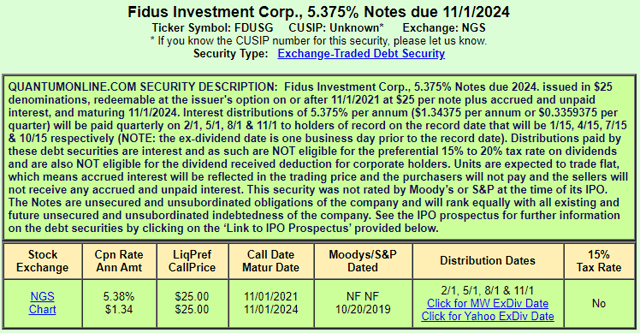
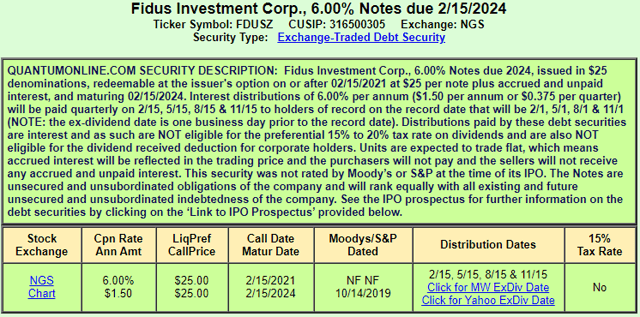
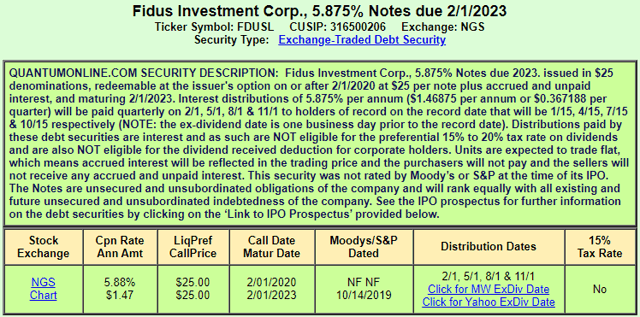
This information was previously made available to subscribers of Premium BDC Reports, along with:
- FDUS target prices and buying points
- FDUS risk profile, potential credit issues, and overall rankings
- FDUS dividend coverage projections and worst-case scenarios
- Real-time changes to my personal portfolio
To be a successful BDC investor:
- As companies report results, closely monitor dividend coverage potential and portfolio credit quality.
- Identify BDCs that fit your risk profile.
- Establish appropriate price targets based on relative risk and returns (mostly from regular and potential special dividends).
- Diversify your BDC portfolio with at least five companies. There are around 50 publicly traded BDCs; please be selective.

